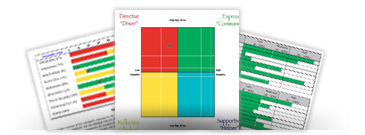Key Ingredients for a Successful Sales Process – 10 Steps

A pre-employment aptitude assessment will help identify the best prospects for inside and outside sales positions. That is just the first step in building a winning sales team. In order to focus all that raw talent and capture significant market share, you need a clear and effective sales process for them to follow.
With a formal process in place, salespeople are 50 percent more likely to meet quota, and turnover is reduced by 39 percent, according to a recent survey by the TAS group.
What about lone wolf salespeople?
Lone wolf salespeople do not last very long on most sales teams because they garner resentment from others for not being team players. This is not their only liability – they also tend to cause a lot of work for other personnel with their offbeat procedures and demands for special treatment. They have a prima donna complex.
Some sales managers inherit teams where the sales leader is a lone wolf, and that can make for a difficult transition. For the good of the organization, it’s best to risk losing that salesperson by enforcing the rules, and then using a pre-employment aptitude assessment to find a good replacement.
Now that I have established that following a sales process is vital, let’s explore the key components of an effective one.
1. Repeatable and scalable
The whole point of having a sales process is to have the correct steps, in the proper order, to take a deal from start to successful finish without having to reinvent the wheel each time. Sales departments should be able to use the same process over and over and get good results whether they are working with one buyer or 100.
Sales managers who find their sales processes ignored by employees need to find out why. There is either a problem with the sales process itself, or you have some staff unwilling to follow. In the latter case, a pre-employment aptitude assessment should help identify salespeople who are team players and therefore likelier to appreciate and execute a formal process.
2. Streamlined with as few steps as possible
A sales process that is overly complicated will be ignored. If you require a ton of paperwork and layers of approval for every step, the sales process will fail and your staff will simply bypass it in order to get their jobs are done without so much trouble.
I would say the ideal is about 10 to 20 steps.
3. Allows oversight at a glance
One of the best parts about CRM systems is they allow you to track each step of your sales process and manage your pipeline at a very granular level. It makes holding people accountable a cinch and also informs managers of trouble spots that could use some attention – such as a deal stuck at stage one of the process for weeks.
4. Focuses on the action, not bureaucracy
A good sales process leads to action, not bureaucracy or an obsession with dotting all “I”s and crossing all “T”s. There should be no reprimand if a salesperson skips a few steps and achieves a closed sale anyway, as the point of the process has been achieved. (An exception would be a lone wolf as described earlier, who has a lot of demands and requests special treatment).
5. Customized for your needs
Finally, a sales process should be adapted to your specific organization. Some might need several processes, one for each major product or service they sell. Work with the key stakeholders to develop one that satisfies all players.

A sample 10-step sales process
Here is a very simple 10-step sales process which we teach at our seminars and workshops as an example.
1. Research the prospect thoroughly.
2. Develop a coach or insider who can provide more information about the prospect’s needs.
3. Ask the coach to arrange an introduction.
4. For large sales, dive deeper with our 20-step capture process prior to the first meeting.
5. At the first meeting, focus on building rapport and let the customer shift the discussion to business when ready.
6. Ask questions to uncover buyer’s needs.
7. Discuss how your solution can help them solve their concerns.
8. Provide appropriate marketing collateral.
9. Send a handwritten thank-you note.
10. Follow up as many times as needed to close the sale.
Note that we don’t specify exactly what you need to say. Sales processes should allow for some leeway and creativity in how each step is accomplished. However, you could break down each step further as needed, or compile a collection of best practices for accomplishing each task in a binder kept in the office or a PDF accessible online.
In summary, a pre-employment aptitude assessment helps you put the right people in the right seats on the bus. A formal sales process is like a map or GPS showing them where to go. Don’t neglect it.



